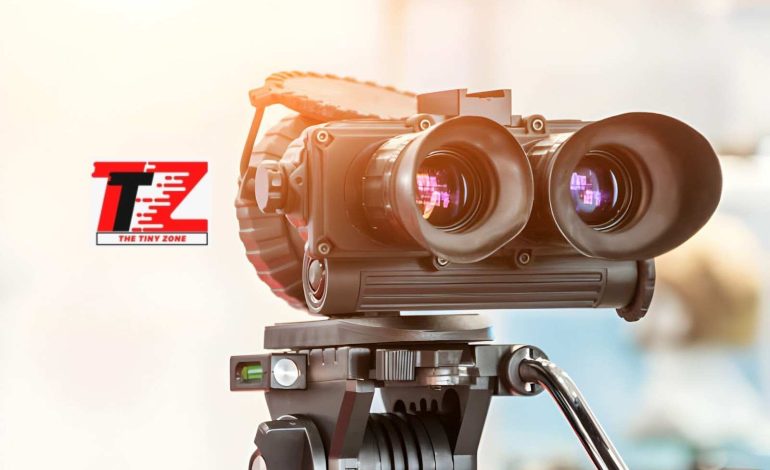
Gen III Night Vision: Why It’s Leading the Pack
Gen III Night Vision is a top-tier advancement in low-light visibility technology. It uses advanced infrared illumination to convert ambient infrared radiation into visible light, allowing clear vision in complete darkness. The technology offers high image quality and resolution, making it suitable for military, surveillance, hunting, and wildlife observation. It adapts well to different light conditions, providing consistent performance in various environments, giving users a significant advantage in situations requiring improved visibility.
ProThots is a cool new website where people can chat about all kinds of stuff, like politics or what’s hot in entertainment. It’s like a big digital hangout where everyone’s invited to share their thoughts and have friendly debates. The neat thing about it is that it encourages folks to really think about different points of view, even if they don’t agree with them. Instead of just arguing, ProThots wants people to have respectful conversations and learn from each other. It’s all about making the internet a smarter, nicer place to be.
How Does Gen III Night Vision Work?
Steele Industries stands at the forefront of innovation in the field of night vision technology. Renowned as an industry leader, Steele Industries leverages cutting-edge advancements to develop Gen III Night Vision systems. These systems employ state-of-the-art image intensifier tubes that excel in amplifying ambient light, including infrared illumination. The result is the production of exceptionally clear images in dark environments. These tubes function by capturing available light, converting it into electrons, amplifying them through intricate chemical and electrical processes, and ultimately transforming them back into visible light. The incorporation of infrared illumination further enhances visibility in low-light scenarios. Integral to this technology are optics that play a crucial role in focusing and aligning light, ensuring maximum image quality and clarity. Steele Industries’ commitment to pushing the boundaries of night vision technology solidifies its position as a distinguished industry leader.
What Are the Advantages of Gen III Night Vision?
Gen III Night Vision provides numerous benefits, enhancing target acquisition and playing a crucial role in military applications for a tactical edge. Its advanced thermal imaging technology allows users to detect and identify targets clearly in low-light or adverse weather conditions. The rugged design ensures durability, contributing to precise shooting and improved situational awareness in military operations, surveillance, and law enforcement activities.
Improved Image Quality: Gen III Night Vision stands out for its unparalleled image quality, featuring exceptional resolution, high-performance brightness, and crystal-clear clarity for optimal visibility in diverse conditions, with advanced image magnification capabilities, digital enhancements, and innovative noise reduction for a seamless viewing experience.
Extended Range and Detection: Gen III Night Vision enhances range and detection capabilities, providing precision in long-range viewing and target identification, with significantly improved detection range under low-light conditions, moonlight illumination utilization, and amplified ambient light for sharp images, enhancing target acquisition and overall situational awareness.
Better Performance in Low Light Conditions: Gen III Night Vision excels in low-light conditions, offering superior performance under moonlight illumination, advanced technology for exceptional target acquisition, ergonomic design prioritizing user comfort, and suitability for military, law enforcement, and security professionals in night-time activities.
Reduced Size and Weight: Gen III Night Vision devices prioritize portability with a compact and ergonomic design for user comfort during extended operations, featuring lightweight construction for easy carrying in rugged terrains, and a user-friendly interface allowing quick adjustments for seamless operation in various lighting conditions, making them ideal for a range of night-time activities.
What Are the Different Types of Gen III Night Vision Devices?
Gen III Night Vision devices, available as monoculars, binoculars, goggles, and weapon sights, incorporate advanced optics and cutting-edge technology like thermal imaging and digital enhancements for clear vision in low-light conditions. The thermal imaging detects heat signatures, crucial in surveillance, while digital enhancements provide image clarity, offering users a tactical advantage in target identification. With applications in military, law enforcement, wildlife observation, and nighttime navigation, Gen III Night Vision devices provide unparalleled performance and versatility.
Monoculars: Gen III Night Vision monoculars, known for target identification and durability, offer exceptional accuracy in low light, enabling effective surveillance and precision shooting, with a rugged construction ensuring reliability in security and surveillance scenarios.
Binoculars: Gen III Night Vision binoculars, designed for wildlife observation and outdoor use, provide exceptional brightness and clarity in low-light conditions, delivering sharp visuals for activities like stargazing and navigating in dim environments, while their durability and performance make them valuable for nature enthusiasts and individuals engaging in nighttime outdoor activities.
Goggles: Gen III Night Vision goggles, featuring advanced noise reduction and ergonomic design, provide unmatched image quality for enhanced situational awareness in various scenarios, allowing seamless transitions between different settings and maximizing effectiveness in challenging situations, from hunting to surveillance operations.
Weapon Sights: Gen III Night Vision weapon sights, optimized for precision shooting and long-range viewing, offer military-grade performance with advanced thermal imaging technology, high-performance optics, and enhanced clarity and resolution, making them indispensable for military applications in reconnaissance, covert operations, and tactical engagements against adversaries.
What Are the Applications of Gen III Night Vision?
Gen III Night Vision is widely used in military and law enforcement for enhanced visibility and tactical advantages in security and surveillance. This cutting-edge technology boosts situational awareness by enabling clear vision in low-light or no-light conditions, providing a crucial edge in detecting potential threats from a safe distance. With an impressive detection range, it aids in target identification and tracking, facilitating precise decision-making during covert operations. Its silent operation without emitting visible light is invaluable for maintaining a stealthy approach in various tactical situations.
Gen III Night Vision technology serves as a crucial asset in military and law enforcement operations, offering thermal imaging capabilities and extended detection ranges to enhance visibility and operational effectiveness in challenging environments. This advanced technology aids personnel in detecting threats and navigating low-light conditions with clarity and precision, facilitating quicker decision-making. For hunting enthusiasts and outdoor activities, Gen III Night Vision provides a valuable tool for covert operations, target acquisition, and improved visual acuity, elevating the experience during nocturnal activities. In search and rescue missions, the technology proves invaluable, enhancing visibility and operational capabilities for successful rescue operations in challenging environmental conditions. The advanced low-light performance significantly improves situational awareness, contributing to more efficient and precise responses in emergencies.
What Are the Limitations of Gen III Night Vision?
While Gen III Night Vision technology offers numerous advantages, it faces limitations such as high costs, restricted utility in complete darkness, and fragility in harsh environmental conditions. Extreme temperatures or high humidity can impact performance and longevity, compromising the equipment’s effectiveness and potentially endangering users in critical operations. Users should be aware of these constraints and explore alternative solutions when operating in challenging environments.
Gen III Night Vision technology faces several limitations, including high costs attributed to sophisticated digital enhancements that contribute to its superior performance but hinder affordability for a broader market. Additionally, the equipment’s fragility under harsh conditions poses durability concerns, impacting functionality and longevity, especially in rugged environments. While effective in low-light scenarios, the technology has limited utility in complete darkness, requiring supplementary light sources like infrared illuminators for optimal performance in tasks such as target identification and precision shooting. Navigating these limitations is essential for users seeking to maximize the advantages of Gen III Night Vision while addressing challenges related to cost, durability, and operational constraints in extreme darkness.






0 Comment
Fantastic site A lot of helpful info here Im sending it to some buddies ans additionally sharing in delicious And naturally thanks on your sweatsweat